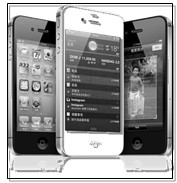题目内容
All living things on the earth need other living things to live with. Nothing lives 1 . Sometimes one living thing kills 2 . Each kind of life eats another kind of life 3 live, and together they form a food chain(食物链). Some food chains are simple, while others are not. But 4 food chains begin with the sun, and all food chains become 5 if one of the links disappears.
All life needs sunlight to live on. But only plants can use 6 directly(直接地). They make food from sunlight, water, air and so on. Animals can only use the sun’s energy 7 it has been changed into food by plants. Some animals feed directly on plants. Others eat smaller animals. Meat-eating animals are only 8 plants indirectly.
What about human beings? We are members of many food chains. We eat wheat, rice, vegetables, fruits and so on. We also eat meat and drink milk. But 9 often break up the food chains. They kill wild animals. They also make rivers, lakes and seas dirty. When these rivers, lakes and seas are polluted, the fish in them 10 be eaten. If people eat the fish, they will get strange diseases.
Each form of life is linked to all the others. Breaking the links puts all life in danger.
All life needs sunlight to live on. But only plants can use 6 directly(直接地). They make food from sunlight, water, air and so on. Animals can only use the sun’s energy 7 it has been changed into food by plants. Some animals feed directly on plants. Others eat smaller animals. Meat-eating animals are only 8 plants indirectly.
What about human beings? We are members of many food chains. We eat wheat, rice, vegetables, fruits and so on. We also eat meat and drink milk. But 9 often break up the food chains. They kill wild animals. They also make rivers, lakes and seas dirty. When these rivers, lakes and seas are polluted, the fish in them 10 be eaten. If people eat the fish, they will get strange diseases.
Each form of life is linked to all the others. Breaking the links puts all life in danger.
| 小题1: |
|
| 小题2: |
|
| 小题3: |
|
| 小题4: |
|
| 小题5: |
|
| 小题6: |
|
| 小题7: |
|
| 小题8: |
|
| 小题9: |
|
| 小题10: |
|
小题1:A
小题2:C
小题3:D
小题4:B
小题5:B
小题6:C
小题7:A
小题8:C
小题9:D
小题10:B
试题分析:这篇短文中作者主要介绍了自然界中的食物链,所有的食物链都从太阳开始,由植物将太阳能转变为食物,然后构成自然界的食物链。我们人类也是食物链中的一环,但是我们经常破坏食物链,从而也危及到我们自身。
小题1:词义辨析。A.独自地;B.孤独地;C.一起,同事; D. 高兴地;联系上文,可知没有东西能独自生存。故选A。
小题2:不定代词辨析。A.其它的;B.两个中的另一个;C.多个中的另一个;D.其余的。结合语境可知此处指的是多个中的另一个,故选C。
小题3:词义辨析。A.为了;B.以便,所以;C.和,并且;D. 为了,以便;句意:每一种生命以另一种生命为食都是为了生存。选项ABC是连词,后面接名词或者句子,故选D,to是不定式符号,后面接动词原形。
小题4:联系下文描述,可知所有的食物链都是从太阳开始,故选B,所有的。
小题5:联系下文描述,可知此处是表示破坏,损坏的意思,故选B,破碎的,坏掉的。
小题6:联系上文描述,可知此处指的是只有植物能直接利用太阳光,故选C,太阳光。
小题7:词义辨析。A.在……之后;B.在……之前;C.直到;D.到……的时候。联系下文,可知此处指的是再植物将太阳的能量变成食物之后。故选A。
小题8:联系上下文,可知句意为:肉食动物只能间接地吃植物。故选C,吃。
小题9:联系下文描述,可知此处指的是人们经常破坏食物链,故选D,人们。
小题10:联系上下文,可知这些被污染的河流,湖泊和海洋中的鱼不能吃了。故选B,不能。
点评:这篇短文内容比较简单,理解不难。各小题与上下文联系比较紧密,答题中一定要注意联系上下文。答完后多读几遍,看看是否符合逻辑,适当修改。个别小题可以当作单独的词义辨析题来做,先区分词义,结合语境选出最能使语句通顺的答案。

练习册系列答案
 阅读快车系列答案
阅读快车系列答案
相关题目

